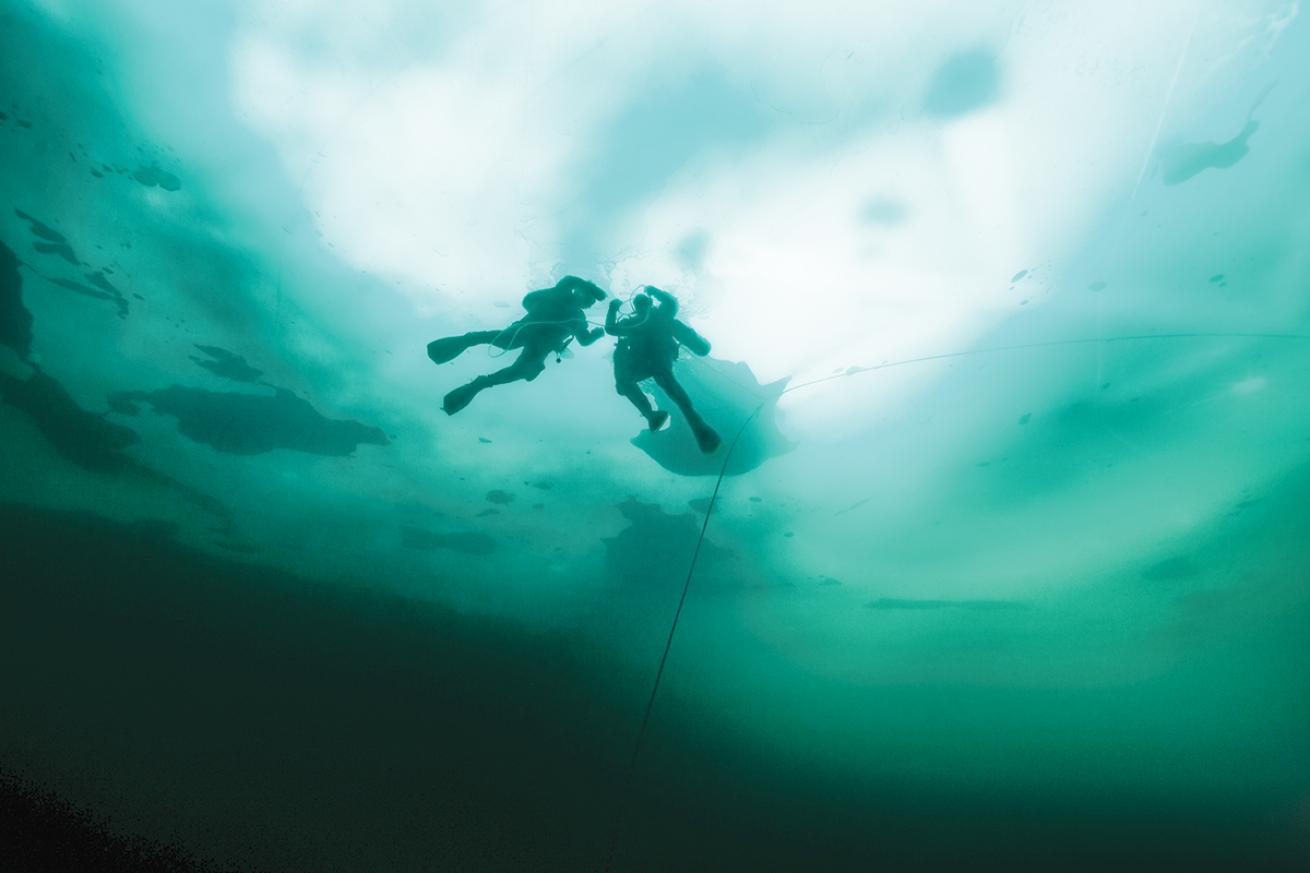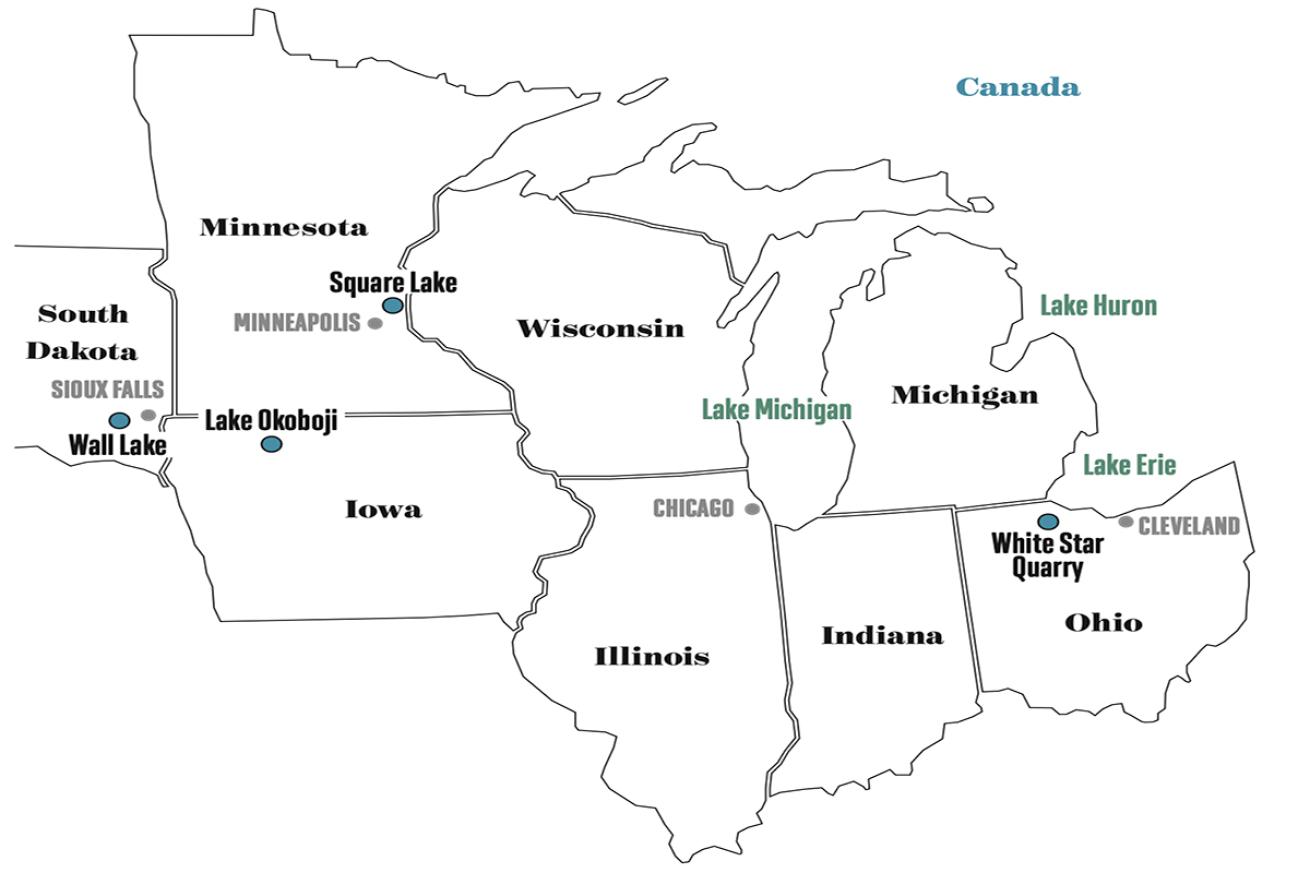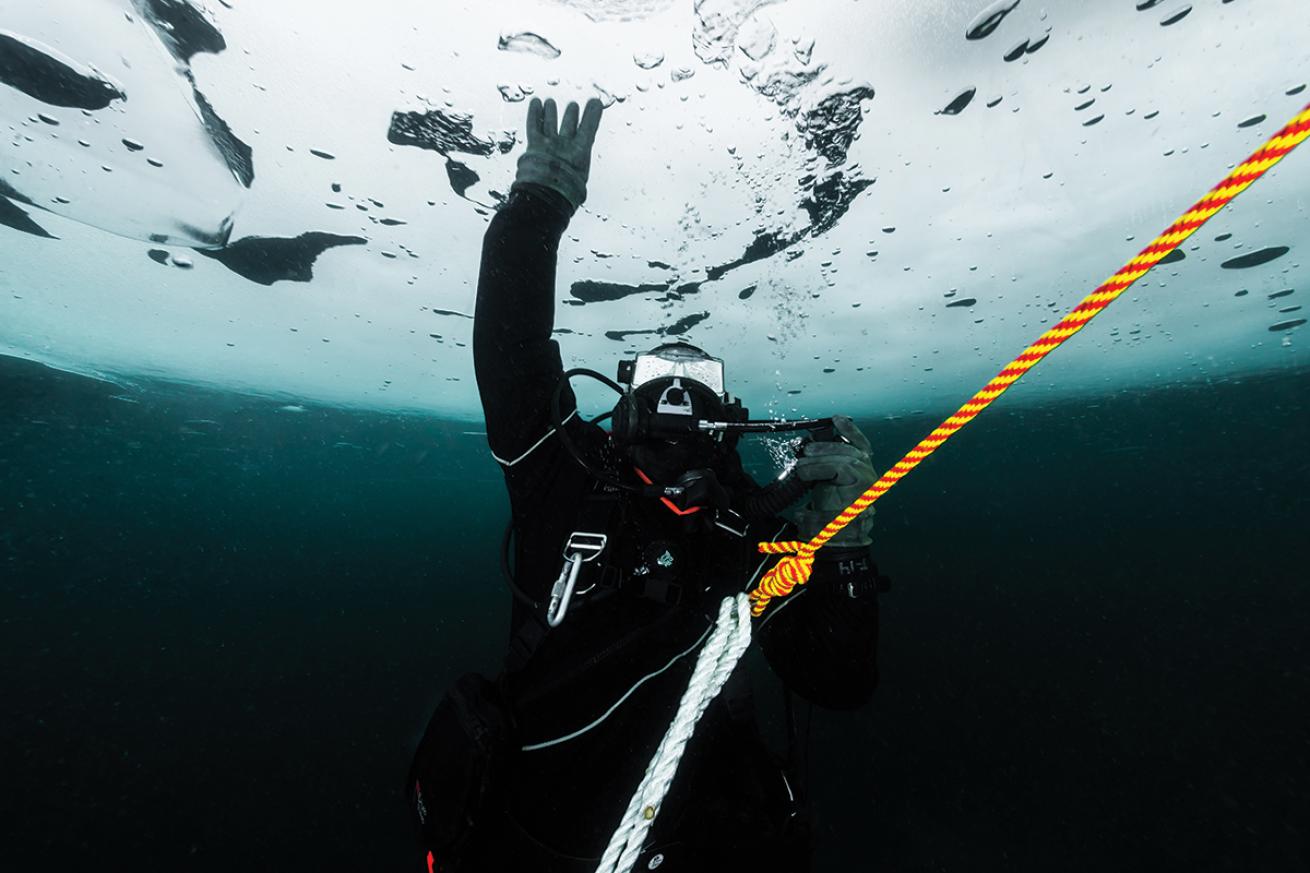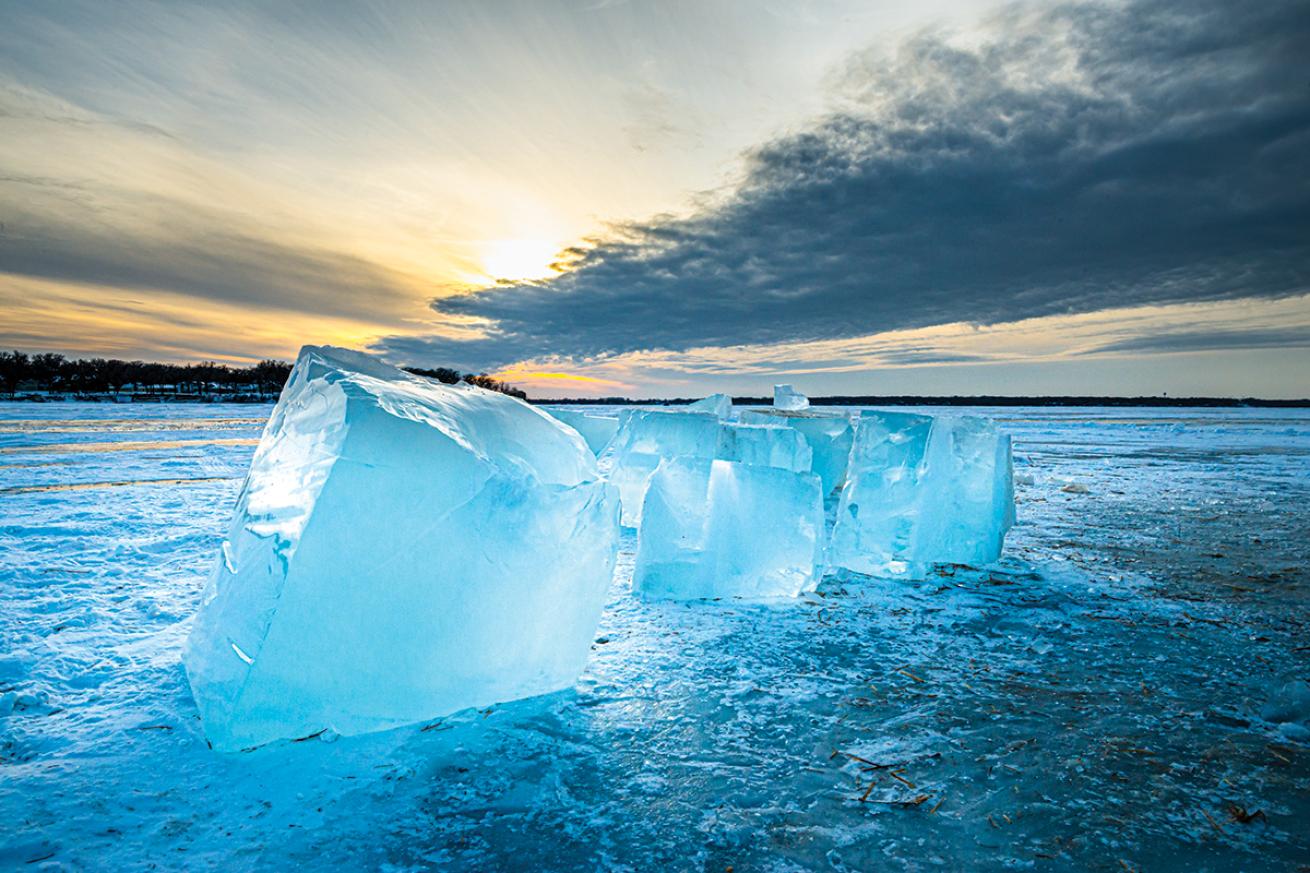A Guide to Ice Diving in the Midwest

Jennifer IdolLakes and quarries become overhead environments during the winter.
America’s heartland is perhaps best known for its down-to-earth people, hearty food and long, cold winters. But the natural environments throughout the region offer unexpected and gratifying dive opportunities, especially during the most inhospitable months of the year.
Although the Great Lakes are renowned for wreck diving, smaller quarries and lakes throughout the Midwest are the most compelling as ice-diving destinations. They’re small enough to freeze consistently, with ice thick enough to safely stage dives by January or February. Thick ice is important for driving on the lakes to dive sites, and for ensuring stable platforms from which to enter and exit the water.
Diving in these conditions requires making preparations not necessary in warm-water diving. Bring a wide board to stand on to keep your feet from freezing while waiting on top of the ice. Make sure you have the proper garments and supplies to withstand the elements both above and below the surface. Topside nearly always feels colder than the dives themselves. Once in the water, with the correct exposure protection, ice diving does not feel as cold as you might think.
Despite the cold, ice diving is a rewarding adventure for divers of all skill levels. Technical divers come amply prepared with redundant systems and DIN valves, but in the right conditions, ice diving is also a great way for recreational divers to develop specialized skill sets and get an introduction to diving in an overhead environment.
Minnesota’s Square Lake offers an accessible and reliable dive site that produces enough ice to plan trips in advance. Although diving in a large group—as is often the case in Minnesota—means more time is spent above water tendering other divers, the shared experience is especially helpful when equipment issues arise. White Star Quarry in Ohio produces the best visibility. South Dakota’s Wall Lake and the resort area at Lake Okoboji in Iowa are also popular dive destinations.
Each site offers its own unique advantages, such as accessibility, camaraderie and underwater visibility. It would be most practical to visit each one as a separate weekend trip. They all work well as winter getaways.
Dive Sites

PADI StaffDiving doesn't stop when midwestern winters blow in.
White Star Quarry
This small quarry in northwestern Ohio is the best introduction to ice diving in the region. It boasts visibility of up to 50 feet and hosts scheduled weekend ice dives for certified ice divers or divers supervised by an instructor. New Wave Snorkel and Scuba Center offers classes in Port Clinton at the edge of Lake Erie.

Jennifer IdolA diver studies the ice from below in White Star Quarry.
Wall Lake
Visibility averages 40 feet in this lake just outside Sioux Falls, South Dakota. Here, LandShark
Scuba and Snorkel Center holds an annual Ice Hole Festival (scheduled for February 10–14, 2021) that is absolutely worth the trek.
Square Lake
Scuba Center in Minneapolis supplies the canopies, heaters and heavy lifting equipment for huge ice blocks during its classes in Square Lake. The lake features sunken attractions such as boats, canoes and a piece of an airplane. This is the largest and coldest of the dive sites. Visibility is about 15 feet.

Jennifer IdolHuge ice chunks that were removed to gain access to Lake Okoboji rest on its surface.
Trip Tips
1. Keeping Warm Dressing appropriately above and below the water makes even the toughest dive conditions manageable. Bring a portable stove for hot drinks, and do not stand next to heaters to warm your drysuit without first getting out of or lowering your suit. Drysuits can freeze solid in the cold, and melt next to heaters.
2. Earn the Specialty Easily completed in a weekend, the PADI Ice Diver specialty teaches more than unique communications and emergency techniques. It’s the only class where a chainsaw is part of the class equipment. Learn about the special skills and equipment, as well as how to set it up and break it down.
3. Getting There Winter weather can make for hazardous road conditions. Stay on larger roads that are readily supported by snow equipment and keep a close eye on weather forecasts. If driving on a frozen lake to a dive site, park far away from other vehicles to avoid breaking through the ice.
Related:










